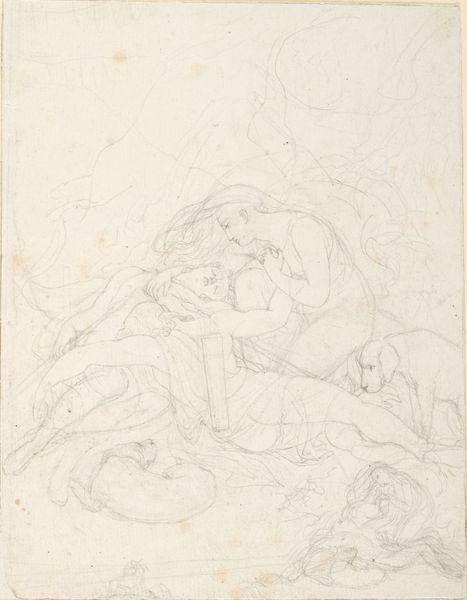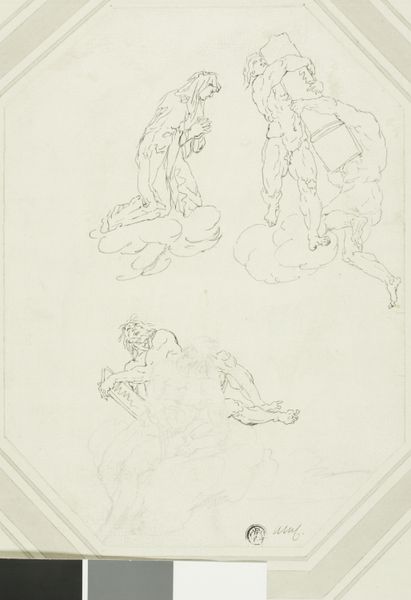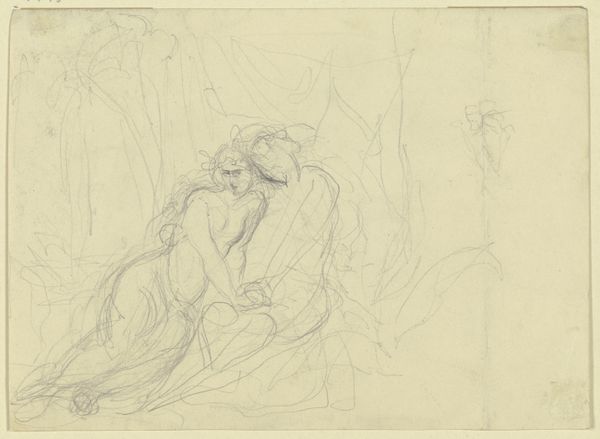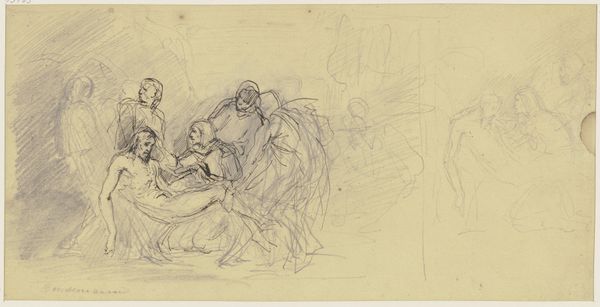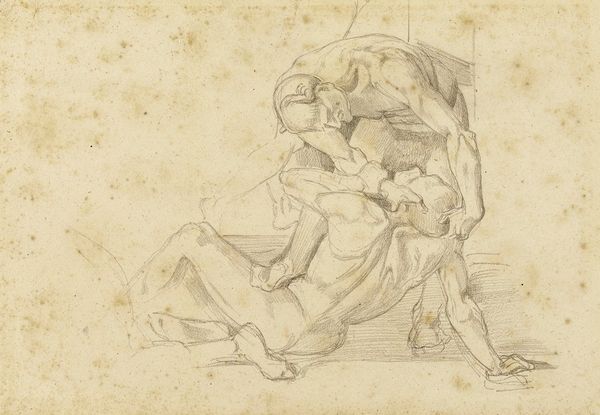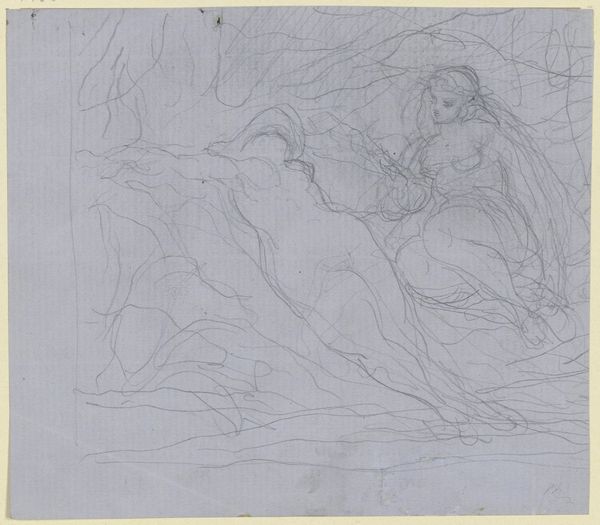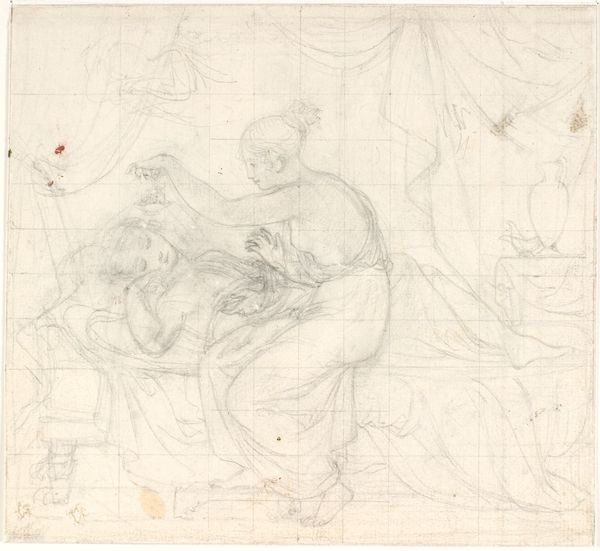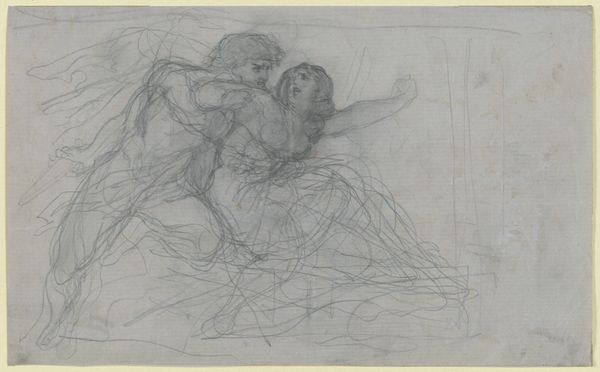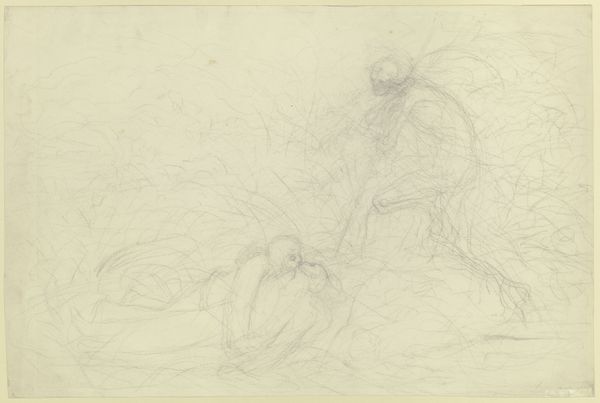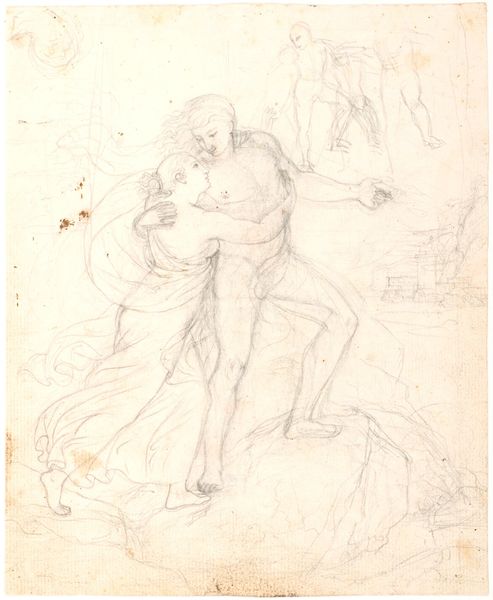
Udkast til samme figur som på recto, men knælende 1743 - 1809
0:00
0:00
drawing, paper, pencil
#
portrait
#
drawing
#
neoclacissism
#
pencil sketch
#
figuration
#
paper
#
pencil drawing
#
pencil
Dimensions: 173 mm (height) x 313 mm (width) (bladmaal)
Curator: This pencil sketch by Nicolai Abildgaard, created between 1743 and 1809, is titled "Udkast til samme figur som på recto, men knælende," which translates to "Draft of the same figure as on recto, but kneeling." It's currently housed at the SMK, the National Gallery of Denmark. What’s your immediate reaction? Editor: A ghostly quiet. Like uncovering a half-forgotten myth sketched in moonlight. All these almost-there lines—do you feel the figure's hesitance, its almost ethereal presence? The composition has an asymmetry that keeps me intrigued. Curator: Indeed. The linear quality of Abildgaard's technique here—his strategic application of delicate pencil strokes on paper—it exemplifies Neoclassical principles, wouldn’t you agree? Note how line defines form, creating a sense of volume. And of course the central figure’s pose. We see the idealized human form, poised and carefully arranged. The underlying narrative or mythological context enriches it. Editor: Neoclassical certainly. But I read this figure’s pose as vulnerability, rather than strength. Kneeling. The weight seems too much. It looks less like studied perfection and more like longing, even brokenness—a raw nerve peeking through the classicism. Is that a lion? The beast is looking kind of sleepy, you know? As if waiting, reflecting back to the figure... Curator: Symbolism, surely, abounds. Lions represented in neoclassical art could indicate themes of courage or the subject’s heroic stature, a subtle but deliberate choice reinforcing its thematic resonance and elevating its overall visual rhetoric. Editor: Rhetoric, perhaps! But maybe Abildgaard felt weary. What do you think about this piece in the light of a period of societal upheaval and change? Maybe Abildgaard’s lion represents society's heavy expectations. Maybe? It doesn't scream heroic triumph. Curator: A compelling reading of societal reflection. I appreciate how you relate subjective experience to what the artwork offers aesthetically. Considering all that, the emphasis of form, balanced asymmetry, all the intrinsic qualities makes me see Abildgaard more vividly, not just as a creator but as commentator. Editor: It's always the ghost of the artist behind the craft. Makes me look and feel differently, you know? Like a whispered confession on a monument.
Comments
No comments
Be the first to comment and join the conversation on the ultimate creative platform.
